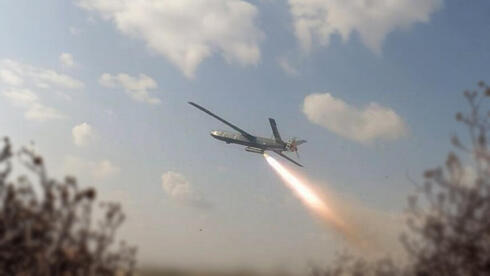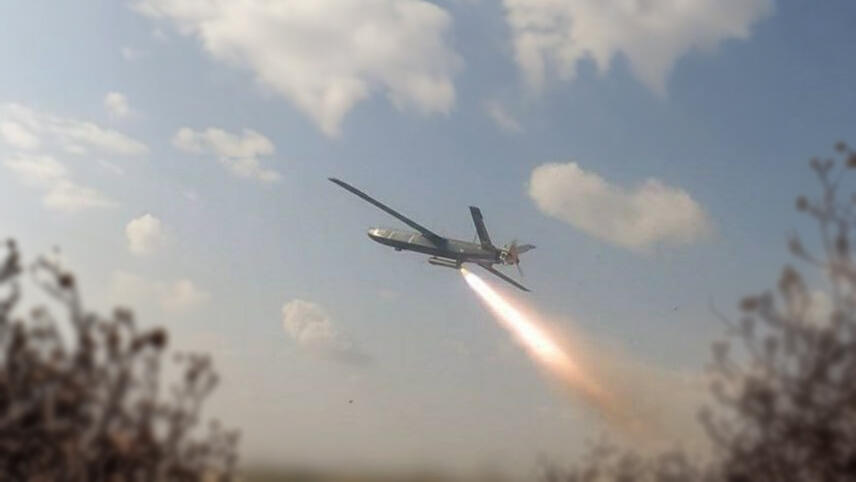
Hezbollah's suicide drones zero in on Israel's weapons industry
Hezbollah continues to demonstrate that its target bank in Israel is extensive, diverse, and well within its reach. This is particularly concerning for the defense system, as it impacts the availability of armaments crucial for the IDF to sustain a prolonged campaign.
While Defense Minister Yoav Galant is in Washington trying to rescue a stranded shipment of thousands of munitions that the IDF urgently needs and to address another diplomatic issue with the Americans caused by Prime Minister Benjamin Netanyahu, the northern regions of Israel continue to endure Hezbollah’s escalating attacks. Hezbollah’s aggression towards Israel deepens, with weapons factories becoming a prime target for the terror group’s suicide drones.
The defense industries have many essential facilities, including production and assembly plants, between Haifa and the northern border. According to a video published by Hezbollah last week, it is clear that they are well aware of these sites. The Shiite organization boasted that a UAV it launched flew for several minutes over the Elbit Systems and Rafael complexes, documenting them with clear video footage, as well as other strategic sites in the Haifa area, including the seaports, the naval base, and the petrochemical plants. The UAV then returned to Lebanon without being detected by the Israeli air defense system.
On Sunday, it was no longer a small reconnaissance UAV, but a "suicide UAV" aimed at the Misgav region south of Karmiel. This area includes Rafael's Leshem Institute, one of its two main sites of activity in the north, alongside the David Institute in the Krayot region. The UAV was intercepted by the air defense system without causing casualties or damage. However, shortly afterward, another explosive UAV evaded the defense systems, hit the Hula Valley area, and seriously injured a soldier.
Rafael is the primary developer and manufacturer of two of Israel's main air defense systems – Iron Dome and David’s Sling. Hezbollah's attempt to launch a suicide drone towards the Leshem Institute demonstrates, once again, its ability to threaten targets deep in the north, about 30 km south of the border. It also highlights the challenges faced by Israeli detection and identification systems against the threat of the expanding UAV arsenal.
Although the UAV was intercepted before reaching its intended target, Hezbollah sees this as a signal of what might come in an all-out war in the north. Claiming responsibility for hitting the Plasan survivability solutions manufacturer in Kibbutz Sasa with anti-tank missiles a week and a half ago, Hezbollah continues to demonstrate that its target bank in Israel is extensive, diverse, and well within its reach. This is particularly concerning for the defense system, as it impacts the availability of armaments crucial for the IDF to sustain a prolonged and powerful campaign.
A single UAV hit, like the one intercepted over the Leshem Institute, would unlikely cause significant destruction. Defending against such an attack is relatively straightforward by entering protected or shielded spaces. However, these protocols were not followed during the UAV attack in the Hula Valley. Videos circulated on ocial media showed soldiers taking pictures of the UAV instead of seeking cover.
In a large-scale war with Israel, Hezbollah will likely not be content with a single UAV but will try to launch many more, targeting Israeli weapons industries while also firing rockets and precision missiles capable of carrying large warheads. This would saturate the IDF's air defense systems, making it challenging to intercept numerous threats simultaneously.
In recent months, the issue of protecting the defense industries has gained urgency in discussions between the companies and the Ministry of Defense. The Israel Aerospace Industries (IAI) recently requested that part of its dividend profits be redirected as state investment to protect its production infrastructures, which have been operating in emergency mode around the clock since October 7.
A significant portion of the IAI's production facilities are located in the center of the country, and they recognize that in an all-out war with Hezbollah, potentially supported by Iran, they will also be targeted. Some industries have already begun to redeploy their infrastructures to minimize damage and destruction in the event of targeted attacks. These measures include separating complexes, relocating critical production lines, isolating concentrations of dangerous substances, and protecting them with various means.
Similar protective measures have been implemented in recent months at air defense sites where Iron Dome and David’s Sling batteries are deployed. These actions follow years of repeated Hezbollah attempts to damage the defense systems. A senior officer recently told Calcalist that in some cases, systems were damaged.















